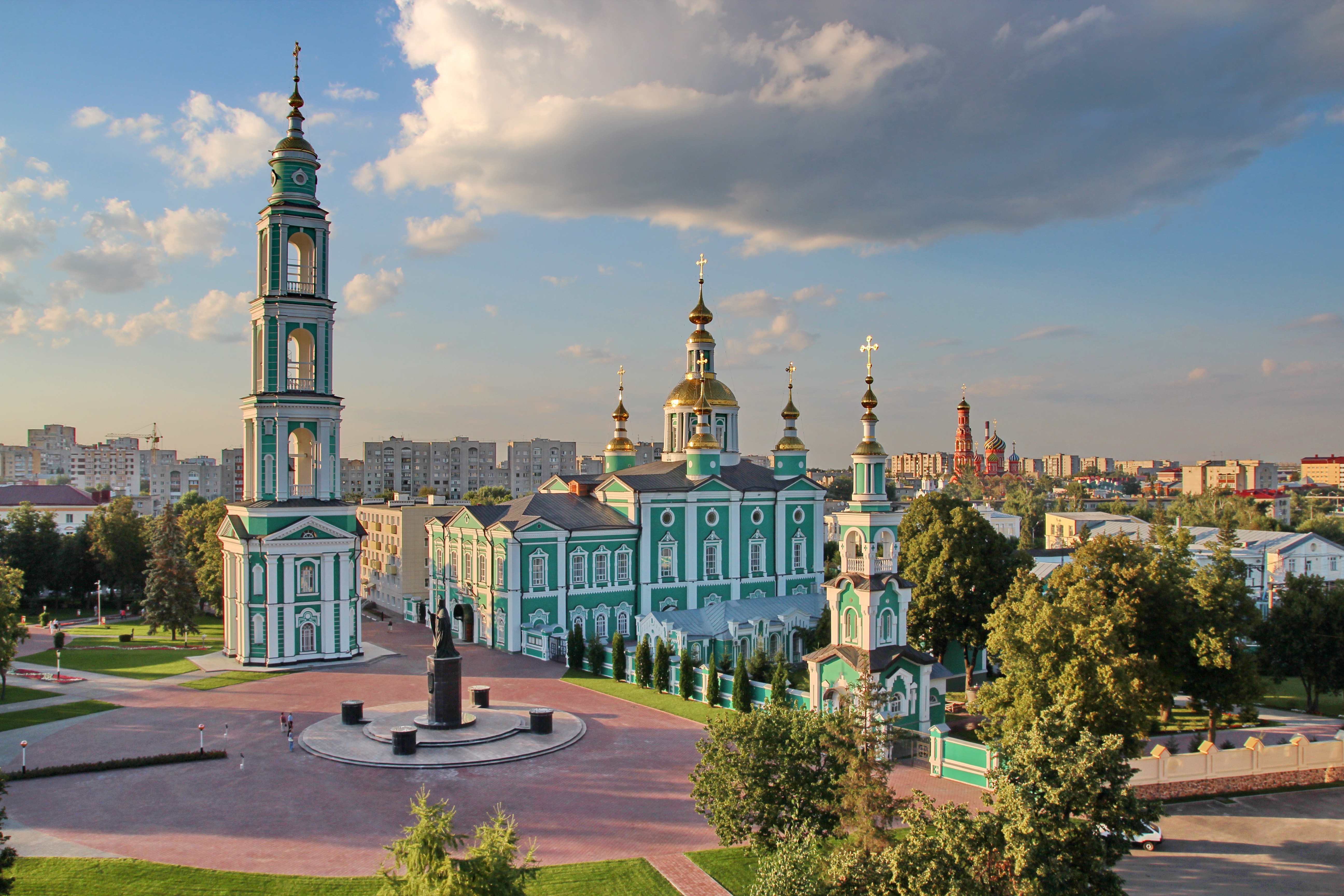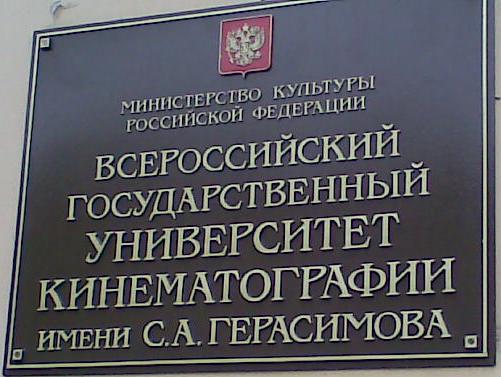|
Lev Kuleshov
Lev Vladimirovich Kuleshov (russian: Лев Владимирович Кулешов; – 29 March 1970) was a Russian and Soviet filmmaker and film theorist, one of the founders of the world's first film school, the Moscow Film School. He was given the title People's Artist of the RSFSR in 1969. He was intimately involved in development of the style of film making known as Soviet montage, especially its psychological underpinning, including the use of editing and the cut to emotionally influence the audience, a principle known as the Kuleshov effect. He also developed the theory of creative geography, which is the use of the action around a cut to connect otherwise disparate settings into a cohesive narrative. Life and career Lev Kuleshov was born in 1899 into an intellectual Russian family.Lev Kuleshov, Aleksandra Khokhlova, ''50 Years in Films''. Moscow: Iskusstvo, 1975, 303 pp. (Autobiography) His father Vladimir Sergeevich Kuleshov was of noble heritage; he studi ... [...More Info...] [...Related Items...] OR: [Wikipedia] [Google] [Baidu] |
Tambov
Tambov (, ; rus, Тамбов, p=tɐmˈbof) is a city and the administrative center of Tambov Oblast, central Russia, at the confluence of the Tsna and Studenets Rivers, about south-southeast of Moscow. Population: 280,161 ( 2010 Census); 293,658 ( 2002 Census); Etymology The name "Tambov" originates from the Mokshan word( mdf, томбале, tombale, the other side, the remote one) Geography Urban layout In terms of its layout, Tambov was no different from other fortified cities - the Kremlin, the prison and a small settlement. The chosen place was in full compliance with the requirements of the fortification. From the north and east, the new fortress was washed by rivers, and from the west and south it was protected by artificial ditches filled with water by the Studenets River. The Kremlin was surrounded by a six-meter wooden wall with 12 towers, from the south-west it was adjoined by a prison, also surrounded by a wall, and beyond the river there was a settlement. A c ... [...More Info...] [...Related Items...] OR: [Wikipedia] [Google] [Baidu] |
Moscow School Of Painting, Sculpture And Architecture
The Moscow School of Painting, Sculpture and Architecture (russian: Московское училище живописи, ваяния и зодчества, МУЖВЗ) also known by the acronym MUZHZV, was one of the largest educational institutions in Russia. The school was formed by the 1865 merger of a private art college, established in Moscow in 1832, and the Palace School of Architecture, established in 1749 by Dmitry Ukhtomsky. By the end of the 19th-century, it vied with the state-run St. Petersburg Academy of Arts for the title of the largest art school in the country. In the 20th century, art and architecture separated again, into the Surikov Art Institute in Moscow () and the Moscow Architectural Institute (); the latter occupies the historical School buildings in Rozhdestvenka Street. History The Palace School of Architecture goes back to the classes of Dmitry Ukhtomsky that operated in 1749–1764. Twenty years, the classes were reinstated by Matvey Kazakov, an ... [...More Info...] [...Related Items...] OR: [Wikipedia] [Google] [Baidu] |
Porfiri Podobed
Porfiri Artemyevich Podobed (russian: Порфирий Артемьевич Подобед; — 9 November 1965) was a Soviet film director, actor and manager at the Moscow Art Theatre.Cinema: Encyclopedic Dictionary // ed. Sergei Yutkevich. — Moscow: Soviet Encyclopedia, 1987, p. 325 [...More Info...] [...Related Items...] OR: [Wikipedia] [Google] [Baidu] |
Vsevolod Pudovkin
Vsevolod Illarionovich Pudovkin ( rus, Всеволод Илларионович Пудовкин, p=ˈfsʲevələt ɪlərʲɪˈonəvʲɪtɕ pʊˈdofkʲɪn; 16 February 1893 – 30 June 1953) was a Russian and Soviet film director, screenwriter and actor who developed influential theories of montage. Pudovkin's masterpieces are often contrasted with those of his contemporary Sergei Eisenstein, but whereas Eisenstein utilized montage to glorify the power of the masses, Pudovkin preferred to concentrate on the courage and resilience of individuals. He was granted the title of People's Artist of the USSR in 1948. Biography Vsevolod Pudovkin was born in Penza into a Russian family, the third of six children. His father Illarion Epifanovich Pudovkin came from peasants of the Penza Governorate, the village of Shuksha and worked in several companies as a manager and a door-to-door salesman. Vsevolod's mother Elizaveta Alexandrovna Pudovkina (née Shilkina) was a housewife. A student ... [...More Info...] [...Related Items...] OR: [Wikipedia] [Google] [Baidu] |
Zrelishcha
ZRELISHCHA (russian: ЗРЕЛИЩА – Spectacles) was a Russian language Soviet illustrated weekly theatre journal. It was originallyublished in Moscow from May to August 1922 under the name "Hermitage" (Russian: "Эрмитаж") (15 editions); from August 1922 to June 1924 (89 editions) it was known as ''Zrelishch''. The journal published a chronicle of cultural events in Moscow with a focus on theatre, dance, opera, circus and music-hall. The journal regularly featured critical reviews, correspondence and discussion on avant-garde cultural activities in the Soviet Union and abroad. Edited by theatre critic Lev Kolpakchi, the journal was associated with the work of V. Ardov, B. Bebutov, O. Brik, P. Markov, V. Meyerhold, S. Yutkevich, A. Fevralsky, B. Arvatov, S, Tretyakov, and others. Many writers of the journal published under pseudonyms. The journal editors expressed affiliation to the Left Front of the Arts (Russian:"Левый фронт искусств") a ... [...More Info...] [...Related Items...] OR: [Wikipedia] [Google] [Baidu] |
Sergei Eisenstein
Sergei Mikhailovich Eisenstein (russian: Сергей Михайлович Эйзенштейн, p=sʲɪrˈɡʲej mʲɪˈxajləvʲɪtɕ ɪjzʲɪnˈʂtʲejn, 2=Sergey Mikhaylovich Eyzenshteyn; 11 February 1948) was a Soviet film director, screenwriter, film editor and film theorist. He was a pioneer in the theory and practice of montage. He is noted in particular for his silent films '' Strike'' (1925), ''Battleship Potemkin'' (1925) and ''October'' (1928), as well as the historical epics '' Alexander Nevsky'' (1938) and '' Ivan the Terrible'' (1944, 1958). In its 2012 decennial poll, the magazine '' Sight & Sound'' named his ''Battleship Potemkin'' the 11th greatest film of all time. Early life Sergei Eisenstein was born on 22 January 1898 in Riga, Latvia (then part of the Russian Empire in the Governorate of Livonia), to a middle-class family. His family moved frequently in his early years, as Eisenstein continued to do throughout his life. His father, the architect Mi ... [...More Info...] [...Related Items...] OR: [Wikipedia] [Google] [Baidu] |
Soviet Montage Theory
Soviet montage theory is an approach to understanding and creating cinema that relies heavily upon editing (''montage'' is French for "assembly" or "editing"). It is the principal contribution of Soviet film theorists to global cinema, and brought formalism to bear on filmmaking. Although Soviet filmmakers in the 1920s disagreed about how exactly to view montage, Sergei Eisenstein marked a note of accord in "A Dialectic Approach to Film Form" when he noted that montage is "the nerve of cinema", and that "to determine the nature of montage is to solve the specific problem of cinema". Its influence is far reaching commercially, academically, and politically. Alfred Hitchcock cites editing (and montage indirectly) as the lynchpin of worthwhile filmmaking. In fact, montage is demonstrated in the majority of narrative fiction films available today. Post-Soviet film theories relied extensively on montage's redirection of film analysis toward language, a literal grammar of film. A se ... [...More Info...] [...Related Items...] OR: [Wikipedia] [Google] [Baidu] |
Gerasimov Institute Of Cinematography
The Gerasimov Institute of Cinematography (russian: Всероссийский государственный институт кинематографии имени С. А. Герасимова, meaning ''All-Russian State Institute of Cinematography named after S. A. Gerasimov''), a.k.a. VGIK, is a film school in Moscow, Russia. History The institute was founded in 1919 by the film director Vladimir Gardin as the Moscow Film School and is the oldest film school in the world. From 1934 to 1991 the film school was known as the All-Union State Institute of Cinematography (russian: Всероссийский (ранее Всесоюзный) государственный институт кинематографии). Film directors who have taught at the institute include Lev Kuleshov, Marlen Khutsiev, Aleksey Batalov, Sergei Eisenstein, Mikhail Romm and Vsevolod Pudovkin. Alumni include Sergei Bondarchuk, Elem Klimov, Sergei Parajanov, Alexander Sokurov and Andrei Tar ... [...More Info...] [...Related Items...] OR: [Wikipedia] [Google] [Baidu] |
Russian Civil War
{{Infobox military conflict , conflict = Russian Civil War , partof = the Russian Revolution and the aftermath of World War I , image = , caption = Clockwise from top left: {{flatlist, *Soldiers of the Don Army *Soldiers of the Siberian Army *Suppression of the Kronstadt rebellion *American troop in Vladivostok during the intervention *Victims of the Red Terror in Crimea *Hanging of workers in Yekaterinoslav by the Austrians *A review of Red Army troops in Moscow. , date = 7 November 1917 – 16 June 1923{{Efn, The main phase ended on 25 October 1922. Revolt against the Bolsheviks continued in Central Asia and the Far East through the 1920s and 1930s.{{cite book, last=Mawdsley, first=Evan, title=The Russian Civil War, location=New York, publisher=Pegasus Books, year=2007, isbn=9781681770093, url=https://archive.org/details/russiancivilwar00evan, url-access=registration{{rp, 3,230(5 years, 7 months and 9 ... [...More Info...] [...Related Items...] OR: [Wikipedia] [Google] [Baidu] |
Ria Novosti
RIA Novosti (russian: РИА Новости), sometimes referred to as RIAN () or RIA (russian: РИА, label=none) is a Russian state-owned domestic news agency. On 9 December 2013 by a decree of Vladimir Putin it was liquidated and its assets and workforce were transferred to the newly created Rossiya Segodnya agency. On 8 April 2014 RIA Novosti was registered as part of the new agency. RIA Novosti is headquartered in Moscow. The chief editor is Anna Gavrilova. Content RIA Novosti was scheduled to be closed down in 2014; starting in March 2014, staff were informed that they had the option of transferring their contracts to Rossiya Segodnya or sign a redundancy contract. On 10 November 2014, Rossiya Segodnya launched the Sputnik multimedia platform as the international replacement of RIA Novosti and Voice of Russia. Within Russia itself, however, Rossiya Segodnya continues to operate its Russian language news service under the name RIA Novosti with its ria.ru website. Th ... [...More Info...] [...Related Items...] OR: [Wikipedia] [Google] [Baidu] |





